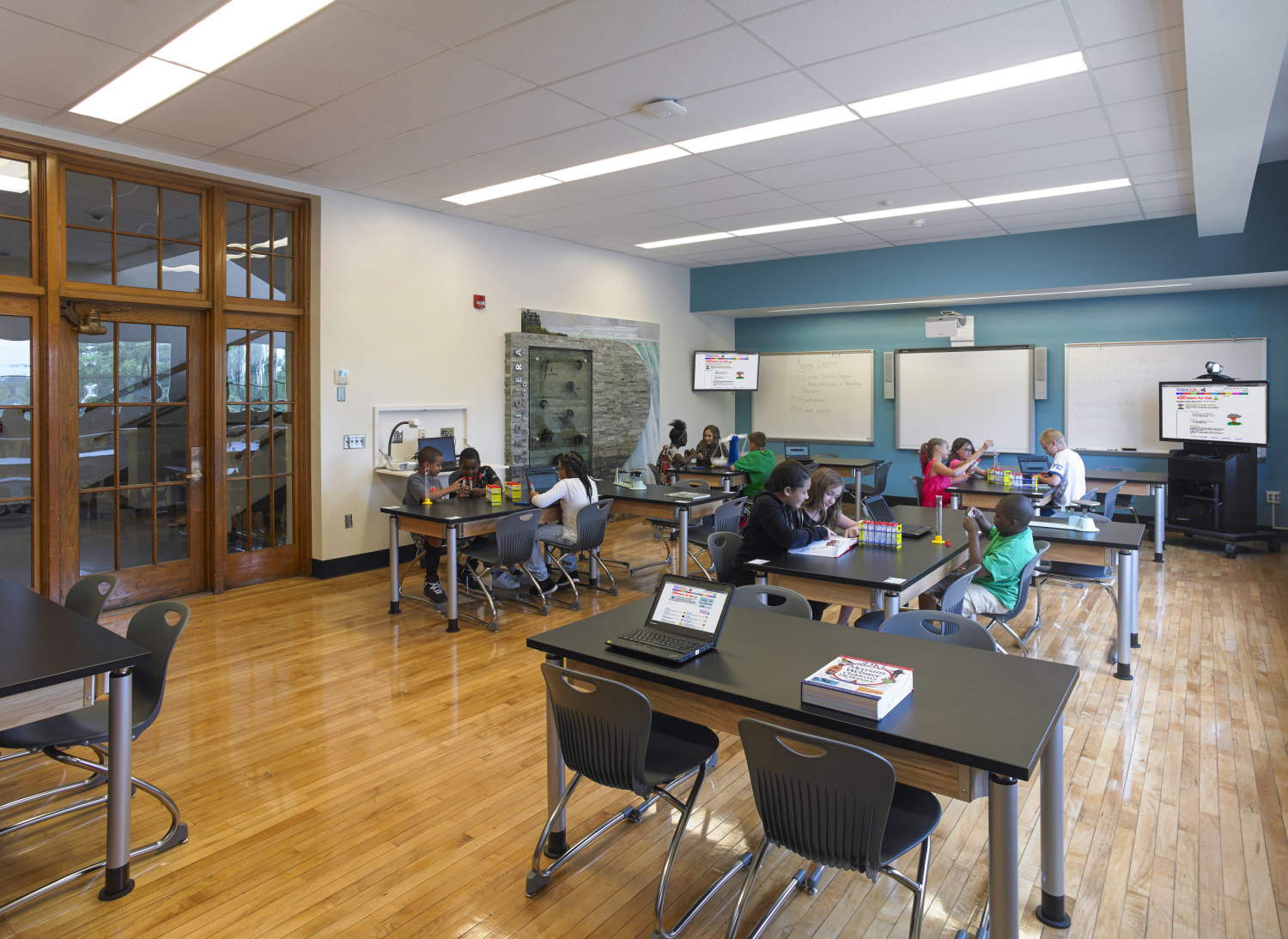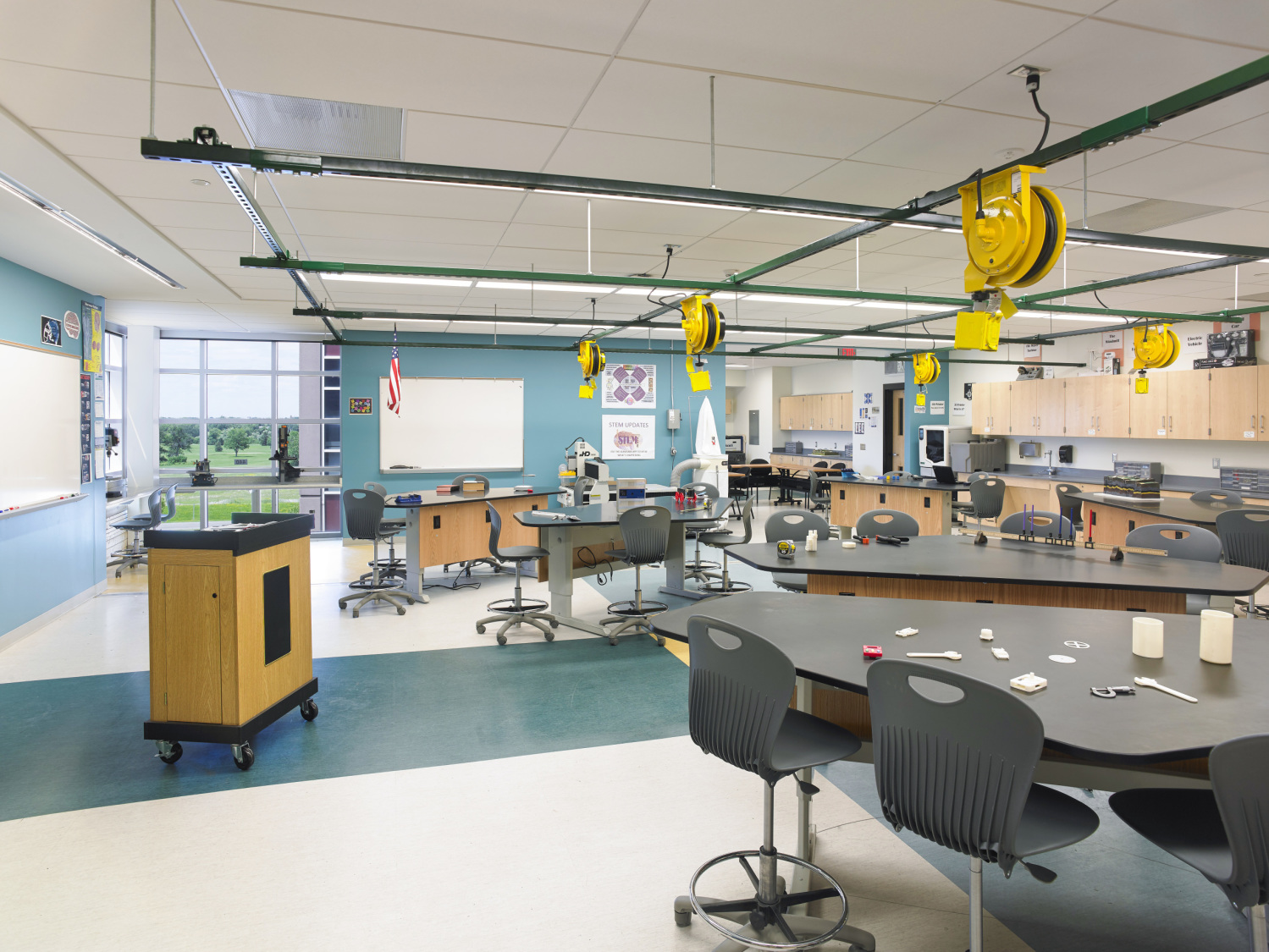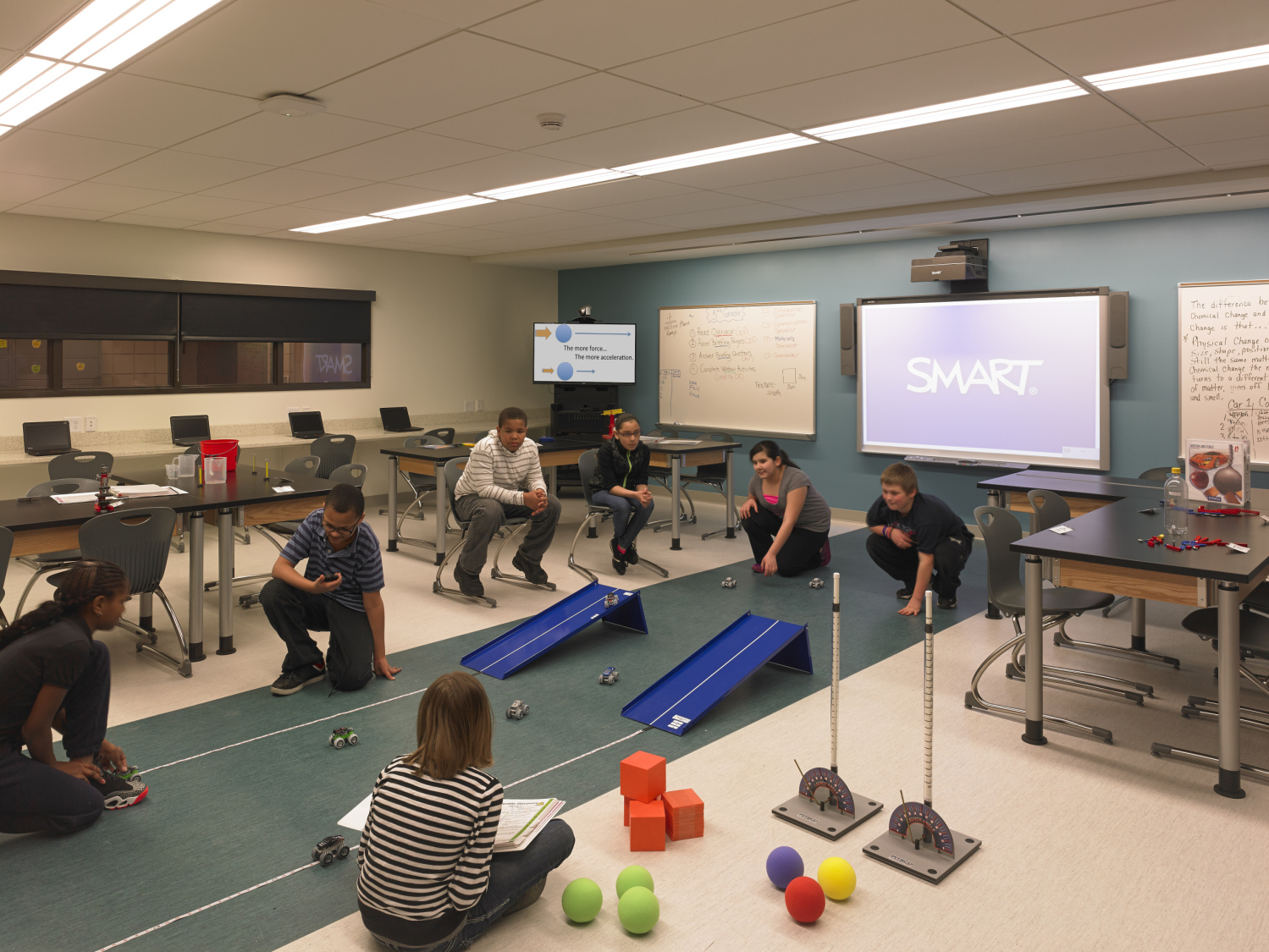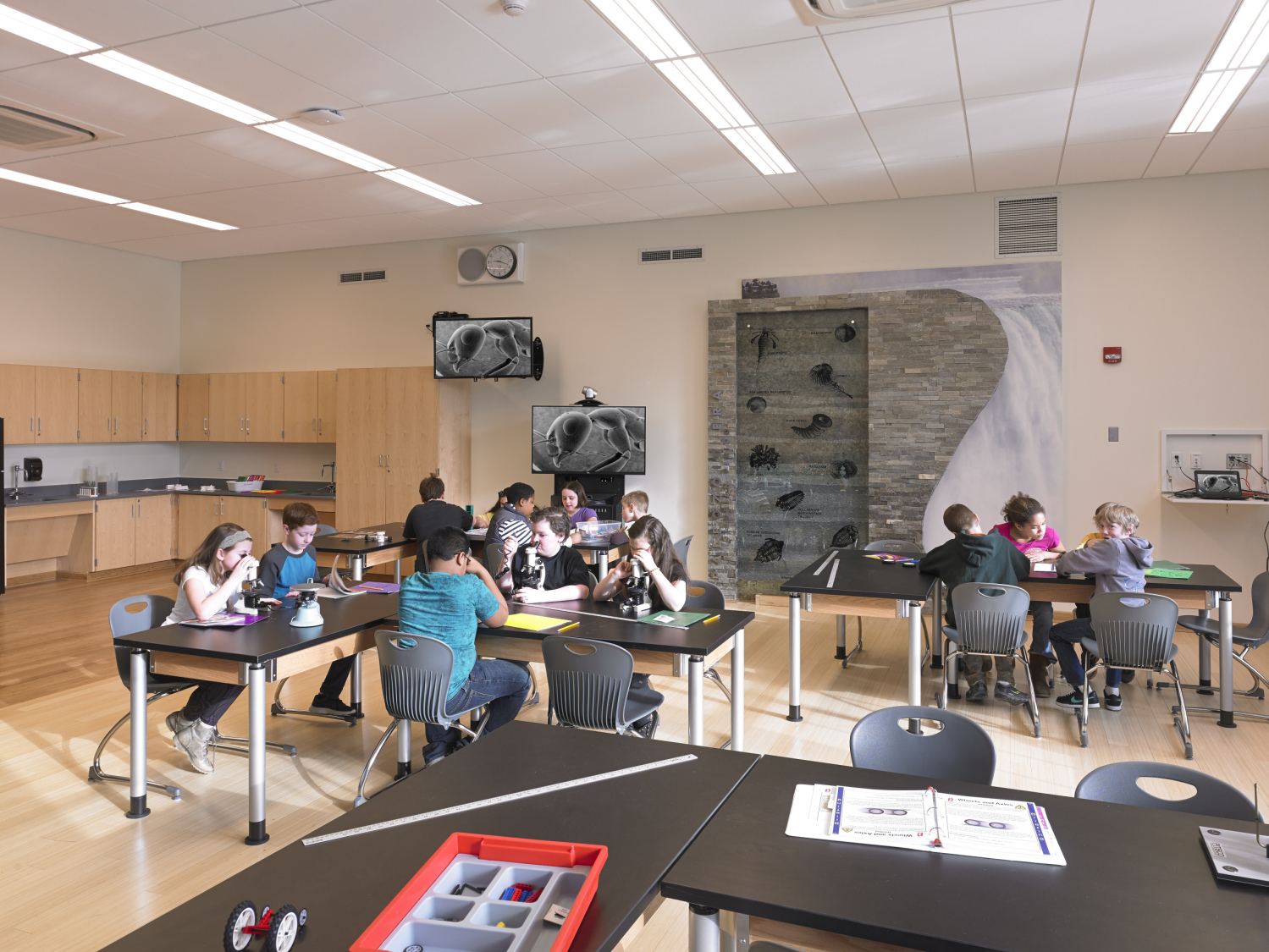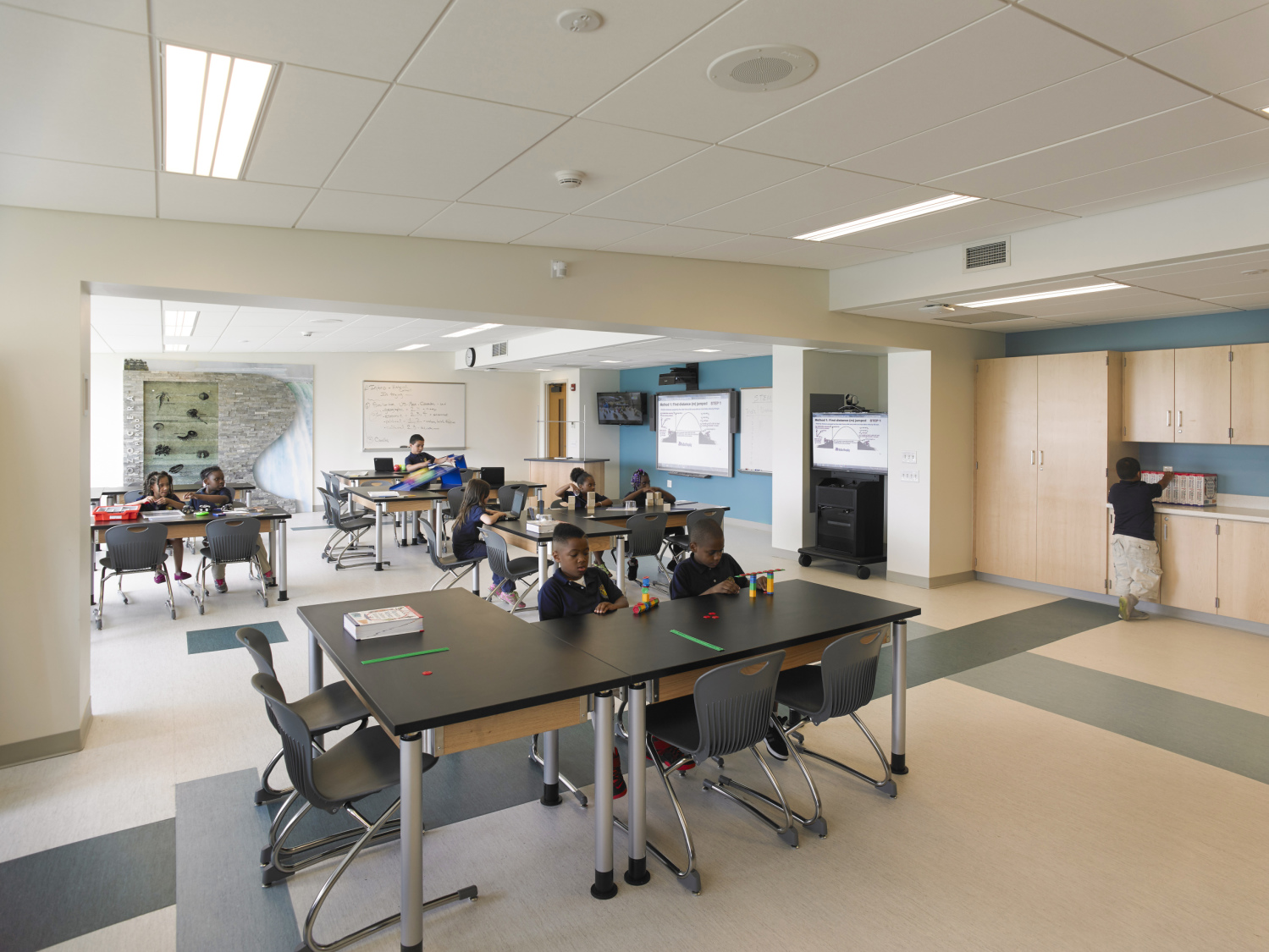Implementing the “Inventing Tomorrow Project”
Since its identification by the New York State Education Department as a high-needs district, the Niagara Falls City School District has been an early adopter of state-of-the-art classroom technologies such as interactive whiteboards to give its high-need students a competitive advantage. Exemplifying this commitment is the Inventing Tomorrow Project, a $66.7 million, two-phase initiative touching the district’s 11 schools — eight elementary schools, two preparatory schools, and a high school. The project has made the Niagara Falls City School District the first known school district in New York State to construct dedicated, shared STEM labs in every school building, providing students with STEM education from kindergarten through high school to make collaborative problem solving and multifaceted exploration a natural part of students’ thought process.
Niagara Falls High School received two STEM specialty labs, one focused on engineering and one on biomedical technology. The engineering lab is equipped with overhead utility grids, mobile furniture, a prep room, lab utilities, and 3-D printing; the biomedical technology lab provides fully outfitted student lab stations, a fume hood, a prep room, and a 3-D interactive whiteboard allowing virtual dissection. Ongoing partnerships with the University at Buffalo, Niagara Hydroelectric Power Authority, and Niagara Falls Memorial Medical Center ensure ongoing real-world relevancy and incremental improvements to these spaces as these fields evolve.
K-8 labs, agile for a wide variety of subject matter, consist of three distinct zones: an open area for large, possibly floor-based, project work such as paper rocket launch studies or track building; a workshop zone complete with mobile group tables and chairs; and a resource bar for computing, note taking, and work-in-progress display. Each lab is outfitted with ample storage, deep sinks, and wireless 1:1 technology. Custom-designed rock walls adorn each lab, displaying a cross-section of the geological layers of the nearby Niagara Gorge, related fossils, and era timelines.

